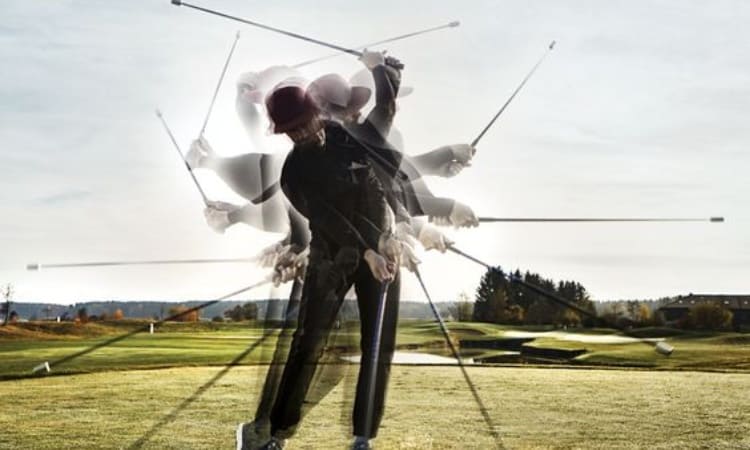Soccer, or football, as the world tends to call it, has to be one of those sports that holds the hearts of millions in its grasp. The ecstasy of the game, comradeship amongst the players, and fans’ passion really unite everyone. But what could it mean to look at the person who actually invented soccer or the roots of this game? Let’s take a trip back in time in this article, looking at the origins of soccer and finding an answer to who came up with the idea of this sport and why.
Where Was Soccer Invented?
The question about the invention of soccer has always risen, leading to a huge debate on the subject. Even though the roots are not so crystal clear, based on historical evidence, the origin of soccer dates back to ancient civilizations. It was, in a primordial form, a game played in different cultures, each contributing to the evolution of the sport into what it is today. 
Image source: Pinterest
The question, “What year was soccer invented?” has also stirred up numerous debates over the years. Well, there have been mentions of football-like games as early as during the Han Dynasty (3rd and 2nd centuries BC) in ancient China. The game was known as Cuju, and the players used to kick a leather ball into a little net. Furthermore, Cuju was not only a type of physical activity but also a form of entertainment that was enjoyed by the majority of people.
Along the same lines, ancient Greece had a game much like football called Episkyros. The Greeks indulged in this sport to boast of their physical strength and instil community spirit. Since the game had a following across different territories and cultures, it kept picking up variation after variation until it finally evolved into modern soccer.
Medieval Roots of Soccer Game
The general description of the game as part of a pastime and recreation of human social life comes from the ancient era. Fast forward to the medieval period, we have instances of ballgame plays in various forms across Europe. More often than not, these involved a few structured rules, and the people used to play them out in open fields or narrow streets. There was no standardization of rules; thus, several variations appeared in line with each community, which added diversity to the nature of the early form of soccer.
The ancient soccer game in England was much more organized and recognizable. The Industrial Revolution brought some significant social changes; with them, people needed some recreational activity. It was here that soccer, as it is today, began to take shape.
The Cambridge Rules first penned down in 1848 at Cambridge University, made up the first attempt towards standardization, laying the basis for norms and regulations for the game to have some form of fairness and uniformity. The adoption of these rules became the catalyst for the spread of the game of football globally, with England at the forefront of development.
Image source: Pinterest
Who Invented the Soccer Game?
The creation of soccer involved the contributions of many civilizations and communities, but the credit has always gone to the English. The person to take credit as the inventor of soccer is definitely obscure. More often than not, the general consensus is that it was a gradual and collective development through ages of exchange and development.
This shows that soccer is not a single individual’s invention but a combined effort. The influence on its development is a blend of different cultures, each adding its own uniqueness to make soccer what it is today.
Why Was Soccer Invented?
The history of why soccer was invented requires an analysis of the sociocultural context of history in various periods. From ancient times through the industrial age, this was more than just a game; soccer was a symbol of the values cherished by society and served as a rallying point for community spirit to coalesce around.
The games in ancient civilizations such as Cuju and Episkyros worked to provide a channel for physical exercise and mental enjoyment for the participants. The activities formed part of the community and were important in the lives of the people by providing them with avenues for recreation and social interactions.
With time and as it evolved into the medieval period, the lack of standardized rules enabled football to adapt to the needs of different communities. Therefore, it became a communal affair that brought people together in the common pursuit of fun and competition.
The sport of soccer was one of the emerging popular recreations for people because of the growing need for organized recreation coming out of the industrial era. In short, the framing of the Cambridge Rules in 1848 was a major turning point, emphasizing fair play and contributing to the global popularization of soccer.
The Spread of Soccer Across Continents
During the expansion of the industrial era, soccer spread globally, with British colonialism acting as a key catalyst. Across colonies, soccer wasn’t merely a pastime but a tool for resistance, empowerment, and identity shaping. Locals embraced the sport, turning it into a cultural phenomenon that transcended societal boundaries.
Image source: Pinterest
The evolution of soccer has continued to establish unity among diverse populations on the same playing field. This phenomenon showcases the power of sport to forge connections, break down barriers, and provide a platform for shared experiences. The ball, once kicked on colonial grounds, rolled far beyond, becoming a symbol of camaraderie that continues to resonate across continents today.
The Formalization of International Competitions
Signifying the rise in popularity of soccer all over the world, a very important event for the sport marked the first official international competition during the 19th century. The British Home Championship, first established in 1884, brought in competitive play between national teams in an organized manner. This event was the precursor to other world cups, most notably the FIFA World Cup of 1930. Subsequently, these events underwent a different significance and became the crucible wherein nations generated camaraderie and friendship through competition.
A football pitch became a place of diplomacy, where nations would fight not just for goals but also for respect and understanding. International competitions would thus further soccer’s role, not just as a sport but also as a symbol of global unity since different cultures would be brought under one banner.
Evolution of Soccer Equipment and Technology
With the evolution of football, there has also been a need for developments and improvements in the kinds of equipment used within the game. From crude balls made from animal bladders to the standardized leather we know today, this is a clear indication of the improvement within the sport.
The process has been through the development of soccer boots, jerseys, and goalkeeping gloves, and technology is playing a vital role. Modern state-of-the-art stadiums, with facilities like video assistance for referees and goal-line technology, have revolutionized the game, ensuring fairness and adding to the overall spectacle.
Socioeconomic Impact of Soccer
The sport has gone beyond the field, and we have witnessed a deep socioeconomic influence on communities throughout the world. It acts as a means to raise oneself socially, an opportunity for every person with some special talent in the world to rise above miserable conditions.
Image source: Pinterest
In addition, soccer academies, community programs, and grassroots organizations provide a lease of life to young players, instilling discipline, teamwork, and leadership skills in them. Soccer also offers an economic boost to the locality by adding to the existing revenue through other industries that are involved in soccer, including broadcasting, merchandise, and tourism.
The Cultural Significance of Soccer
Football is such an unavoidable culture that it sends its influences globally. It goes past fan chants and victory dances — it is a mix of the expressions of culture. From art and music to literature and politics, it goes through all walks of life. National identity thus becomes bound up with the sport since the emotional impacts of victory and defeat establish a relationship between football and national consciousness.
It passes from one generation to the next as the cultural influence it bears today leaves an indelible mark in memories and forms a sense of belonging for fans. Football is a game and a cultural legacy echoing down the annals of time. It is knitted into the very fabric of societies worldwide.
Key Takeaways
Who came up with soccer and why are questions that take a person through the dusty annals of history. From ancient Chinese games to medieval pastimes, finally gaining formalization with rules developed in 19th-century England, at large, soccer’s progress seems to mirror mankind’s constantly changing nature.
Football, strong as ever, holds a combined identity of the inventors. The game knows no borders, no cultures, and no races, and its charisma has created a global village of lovers sharing the passion of a beautiful game. This is because everyone throughout the world loves soccer. It is a journey from ancient ball games to the grandiose stadiums that dot the planet today. It is a testimony to the universal language of sports, a language spoken with passion, energy, and a unifying spirit.







